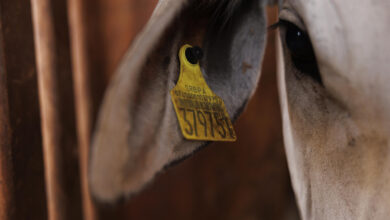Decreasing the Consumption of Milk Helps the Environment?
Sustainability and food security are two aspects that must be addressed when dealing with milk production and consumption.

The Woman Post | Catalina Mejía
Listen to this article
Particularly in the case of low-income countries, it is clear that milk represents an important asset to better human nutrition and health.
Diary food and milk contain important nutrients for food security, such as protein, selenium, magnesium, calcium, riboflavin, vitamin B12, and vitamin B5. According to Keast and colleagues, in the United States, where many foods are available, milk is still the leading source of several essential nutrients for children from 2 to 18 years of age. As stated by Wattiaux, the diary sector grows rapidly in low-income countries. However, the worrying aspect of milk production and consumption is related to their environmental impact.
A study by Gerber and colleagues found that global GHG emissions from milk production, processing and transportation represent 2.7% of global anthropogenic GHG emissions, where global emissions per unit of milk are reported at 2.4kg of CO2 equivalents (C02-eq) per kilogram of fat and protein corrected milk. On the other hand, the global livestock sector represents 14.5% of anthropogenic GHG emissions, with 20% coming from the dairy sector and 41% coming from the beef sector.
Also read: WHICH TYPE OF MILK IS THE BEST AMONG ALL THE OPTIONS?
In low-income countries, the environmental impact of dairy production and consumption is worse, since they depend on increasing the number of dairy animals to meet the growing demand for milk and dairy foods. Hence, a study by Tricarico and colleagues, suggests that improving the genetic potential of animals and the availability of quality feed, and providing balanced nutrition are the most promising ways of improving milk production and sustainability in low-income countries.
Now, bearing in mind the environmental impacts of dairy production and consumption, we suggest some important tips to lower your consumption of milk and dairy products.
1. Look for vegan options for preparing your favorite meals at home
You will always find vegan substitutes for meals that you enjoy at home. Have fun cooking them from scratch!
2. Find a non-dairy milk option that you enjoy
There are plenty of options including soy, hemp, almond, cashew, or even oat milk which will add different flavors and health benefits to your diet.
3. Replace cheese with yeast
Nutritional yeast is healthy and can taste similar to cheese. You can even replace cheese with yeast to make macaroni and yeast at home.
4. Eat dairy-free ice cream
You can try making it at home or you can find different brands that make great versions of non-dairy gelato.
5. Learn to read food labels to avoid hidden dairy in products
Some processed foods such as bread or cookies contain dairy products. Always remember to check the ingredient list, before you buy processed food.




